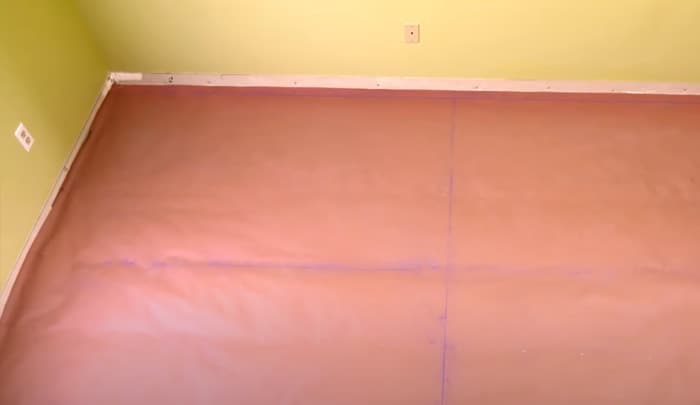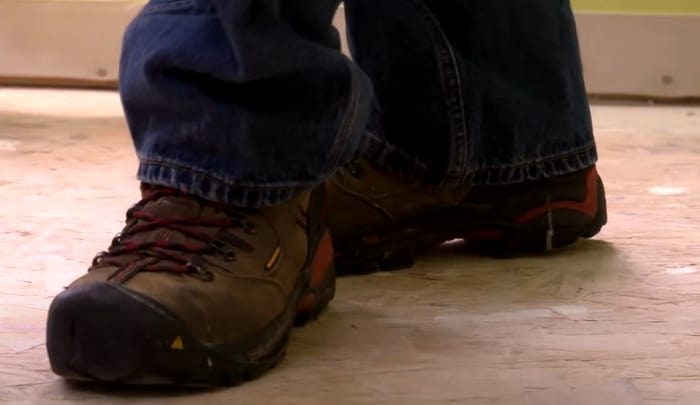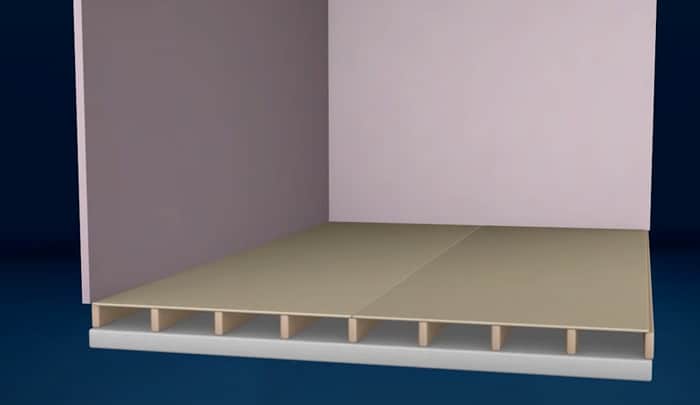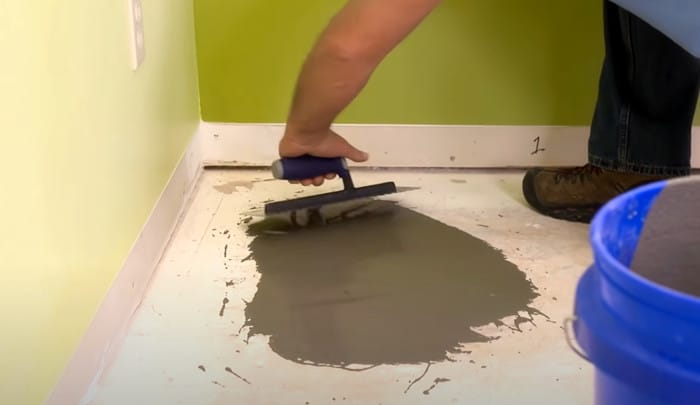If your home improvement project list includes installing hardwood floors, and you’re considering skipping the subfloor, it’s important to know the facts before making a decision. This blog post will delve into the considerations of whether a subfloor is needed when installing new hardwood flooring so that you can make an informed, accurate assessment of the situation and ultimately make the right choice for your project. We’ll start by taking a look at the role a subfloor plays in the hardwood flooring installation process, the benefits of having a subfloor, and the risks associated with a floor installation without a subfloor. Finally, we’ll explore the options available for both subfloor and no-subfloor installations, so you can make the best decision for you. So, hang tight, and you’ll soon understand why a subfloor might be a great choice for your home improvement project and know what to expect if you choose to forgo it for your hardwood flooring installation.
- Understanding the Installation Process
- Key Takeaway
- Identifying Potential Problems
- The Benefits of a Floating Installation
- Are there any advantages to installing hardwood without a subfloor?
- What are the potential risks of installing hardwood without a subfloor?
- What type of material should be used instead of a subfloor for hardwood?
You can lay a floating floor system, which involves attaching the tongue and groove connecting pieces with a foam or cork underlayment. You may also use self-adhering fiberglass mesh tape between the existing floor and the new hardwood in order to strengthen it and reduce noise.
“Flooring installation is a craft that benefits immensely from experience and technical understanding, especially when unconventional approaches like installing hardwood without a subfloor are employed. This method absolutely demands thorough preparedness, otherwise homeowners run the risk of development of moisture issues, inadequate insulation and stability problems, which would necessitate expensive corrective work down the line.”
Harley Fenton, Certified Flooring Contractor
Installing Hardwood without a Subfloor
Installing hardwood floors without a subfloor beneath them can be a tricky process, as it often varies from traditional installation techniques and requires knowledge about the various wood types and screw lengths used for the job. On one hand, hardwood floors installed without a subfloor provide more stability against shifts and expansions since there is no space between the subfloor and the hardwood flooring. This type of installation is often done on the first floor of new construction or on a concrete slab. On the other hand, hardwood floors installed without a subfloor can cause a hollow sound when walked upon. Additionally, because there is no additional layer of protection from moisture, humidity levels must be closely monitored to ensure that the flooring has not become damaged over time due to water seeping underneath.
Before taking on this task, it is important to weigh the pros and cons of each side. Installing hardwood without a subfloor could potentially provide added stability in comparison with installing over an existing plywood subfloor; however, it is also important to consider any potential risks before making a decision.
Understanding the installation process is key to creating a successful and durable floor that will last throughout time. Properly measuring and cutting the planks will help avoid having issues during installation and provide long-term stability for your hardwood flooring. Furthermore, understanding how to seal gaps around baseboards, moldings, doorways, etc., provides an important barrier from water damage and dust infiltration into your home. In the following section we will discuss what you need to know about properly installing hardwood floors in order for them to operate effectively for years to come.

Understanding the Installation Process
When it comes to installing hardwood floors without a subfloor, understanding the installation process is essential for achieving satisfactory results. The two main approaches are direct glue-down and nail down installation. Both have their pros and cons and the best choice will depend on your floor type, budget, and aesthetic.
For direct glue-down installation, glue is applied directly onto the existing floor before the planks of hardwood are laid over it. This means you do not need to invest in extra materials such as nails or staples but you may need to take extra precautions to prepare the surface first by making sure it is clean and flat. This can also be a great solution when you want to keep costs low as it requires less labour compared to other installations. On the downside, if moisture levels in the area are too high, then there could be a risk of mold developing underneath the planks due to insufficient circulation.
On the other hand, nail down installation can work well in even poorly insulated areas since the planks are attached directly to the existing floor with nails or staples. By driving in nails into existing wood or concrete, this approach will provide additional stability for your flooring. Plus, if done correctly with accurate measurements and nailing pattern this can result in a much more aesthetically pleasing outcome than with adhesive only installation. However, since this approach requires additional materials such as nails/staples and more tools for complete accuracy during installation it could also prove to be more expensive than simple glue-down option.
To conclude, when considering installing hardwood without a subfloor it is important to consider all options carefully based on cost considerations and desired aesthetic outcomes. Evaluating the existing floor structure is another key factor that must be taken into account before starting an installation project so that you end up with the best possible outcome. The next section will discuss what should be considered when evaluating an existing floor structure prior to beginning an installation project.
- Installing a hardwood floor without a subfloor can lead to excessive squeaking and creaking when walking over it.
- In areas without sufficient ventilation, a lack of a subfloor can cause buckling and warping due to moisture buildup in the structure beneath the hardwood.
- Without a subfloor, hardened glue, nails, staples and other materials may protrude through the hardwood floor causing potential safety hazards such as tripping or injury.
Key Takeaway
Installing hardwood floors without a subfloor requires understanding the process, as there are two main approaches: direct glue-down and nail down installation. Each have their own pros and cons – glue-down is cheaper but riskier with moisture levels, whereas nail down provides stability and aesthetics but requires additional materials. Additionally, evaluating the existing floor structure is key to achieving the best possible outcome.
Evaluating the Existing Floor Structure
Evaluating the Existing Floor Structure is an important step when it comes to installing hardwood floors without a subfloor. This assessment will provide a look at the integrity of the floor, determine if any repairs or upgrades are necessary, and also helps in plan for the installation process.
When evaluating an existing floor structure, there are some key components that need to be carefully considered. For unfinished floors, there should be an inspection of the thickness and width of joists from which to suspend the new flooring, as well as beams and posts for stability. If there is shimming needed due to warped wood or other inconsistencies in level, it should be taken into account during this evaluation. Additionally, although not always required, reinforced floor systems may need to be considered based on the weight of the hardwood being installed.
For finished floors, additional factors such as ensuring the floor is flat and in good condition with no water damage; any squeaking within the existing boards; and accommodating possible differences in height between the old and new floor need to be taken into consideration. Moreover, when dealing with tile floors, removal and disposal costs of exposed layers must also be estimated.
Regardless of the original floor type, sound structural elements should remain at all times in order for success with installing hardwood floors without a subfloor and maintain structural stability. Now that you’ve evaluated your existing floor structure let’s dive into identifying potential problems that can occur throughout this project.
Identifying Potential Problems
Installing hardwood floors without a subfloor can come with certain risks. Without the protection of a subfloor, the floor experience more wear and tear due to its lack of support. During installation, gaps may appear between boards due to unevenness in the base floor, which further weakens the floor’s overall integrity. Additionally, unevenness can cause improper installation that could lead to creaky floors and other issues.
Installation on an existing concrete slab is also riskier than installing directly on a plywood subfloor because it’s difficult to guarantee evenness in the surface of a concrete slab. Therefore, it’s important to check for any dips or bumps in the concrete before beginning installation; these inconsistencies can cause flooring material to buckle or pop up as it expands and contracts with changes in temperature and humidity.
Regardless of whether you are installing your hardwood floor on an existing concrete slab or directly onto joist structure, there is always potential for problems due to moisture buildup and inadequate ventilation. Poor ventilation leads to a build-up of moisture beneath the surface which can eventually destroy the hardwood. It is therefore essential to install vents before beginning installation process so wood floors can properly absorb and release trapped moisture over time.
Installing hardwood floors without a subfloor comes with certain risks, but proper preparation can minimize these risks. The next section will discuss available options when it comes to hardwood floor installation—options that should be considered pre-installation in order to avoid any potential problems down the road.

Hardwood Floor Installation Options
When it comes to hardwood floor installation, there are many different options available. It is important to consider the variables for each option to determine which one is best for you and your particular situation.
One option is full adhesive installation or glue down installation. This method involves applying an adhesive between the hardwood planks and the existing subfloor with a trowel-like spreader. The adhesive will help secure the wooden planks firmly in place. Full adhesive installation can be a great way to ensure a long lasting and stable floor. On the other hand, if not done correctly, it can leave the homeowner with more trouble than its worth when it comes time to remove the flooring.
Another option is floating installation where each plank of hardwood interlocks with the next via a tongue and groove edge connection. This option allows each plank to ‘float’ above the subfloor, secured in place only by their interlocking connections. This can provide a strong and stable floor without requiring an underlying subfloor due to its floating nature. However, this type of installation has its drawbacks too, such as potential issues caused from expansion from heat or moisture should those conditions become present in large amounts.
No matter which installation option you choose, proper preparation of the area is essential for achieving desired results with any project concerning hardwood floors. With that said, the following section will discuss more on the benefits of opting for a floating installation as it pertains to installing hardwood floors without a subfloor.
The Benefits of a Floating Installation
A floating installation is one of the most popular techniques used for installing hardwood floors. This method involves securing the boards together with a special tongue-and-groove system while they are not attached to the subfloor underneath, allowing the wood to move slightly with changes in temperature and humidity without warping or damaging the floor. The main benefit of this technique is that it allows for easy installation on uneven surfaces or over any existing flooring, such as concrete.
Additionally, since the boards aren’t actually nailed down, there is less mess and disruption associated with a floating installation compared to traditional methods. In addition, floating installations provide more flexibility when making future repairs or renovation. For example, if you need to replace a board, you can simply unscrew the particular piece without having to take up an entire section of flooring.
On the other hand, some professionals contend that a floating installation may not be as good as traditional means for some situations. As previously stated, the floor does move slightly, which could be an issue for larger homes where substantial movement can cause long term damage to furniture and potentially even increase noises between floors. Additionally, if the edges of each board are not properly sealed using mold-resistant sealants, moisture can easily get trapped between boards and potentially cause mold in the future.
For those looking for a cost-effective solution that won’t disrupt their current home setup and is easier to install than traditional methods, a floating installation is an attractive option. Before deciding on this method however, it’s important to consider all potential benefits and drawbacks in order to ensure that your specific project will meet expectations in regards to aesthetics and long-term use.
With that information in mind, let’s move on to exploring what needs to be done in order to properly prepare the surface for installation:

Preparing the Surface for Installation
When installing hardwood floors without a subfloor, the surface must be prepared for installation. This includes ensuring that the floor is level, clean, and free of debris for a successful and long-lasting installation.
When starting in the preparation phase, it’s important to ensure that all cracks and gaps in the surface are filled and leveled. This level-surface should then be vacuumed thoroughly to remove dirt, dust, and other debris from the surface. Next, if any types of moisture-proof sheets, boards, or panels are being used as part of the installation process they should be sealed with a coat of sealant before moving ahead with installation.
Finally, many enthusiasts debate on whether or not an underlayment or crosslayer mat should be considered during this step in the process; proponents of using an underlayment suggest that it can help to create better insulation between the surface and the hardwood floor planks by adding shock absorption and sound proofing; however opponents suggest that because these mats are made from non-breathable materials such as rubber foam plastic – they can actually increase the risk of potential moisture damage over time.
The decision to use an underlayment or not ultimately comes down to measured risk: weighing what advantages one might gain from its use against what additional problems could result.
Having now carefully prepared the surface for installation, it’s time to effectively protect it during installation – which will be discussed in detail further in the next section about “Protective Measures to Prevent Future Problems”.
Protective Measures to Prevent Future Problems
When it comes to installing hardwood floors without a subfloor, it is important to take protective measures to ensure the longevity and protection of your hardwood. One of the most important measures is using moisture barriers, or vapor barriers, which prevents water damage and potential mold growth. Moisture barriers are plastic sheets or rolls placed between the floor and the concrete slab, on which the hardwood will rest. This allows for insulation from moisture accumulation that could potentially seep through into your flooring and cause warping or other costly damages.
Other protective measures include securing the hardwood to the joists with glue and nail/staple guns. When properly installed, this ensures a firm connection between the wood planks and the joists, resulting in additional stability and less chance of movement. In addition, if you install the hardwood over an old floor you should replace any creaking boards or loose nails in order to minimize any possible imperfections that could lead to permanent damage.
Finally, if you think that there may be an issue with moisture in your home, consider investing in a dehumidification system. This type of system helps to keep humidity levels consistently low, which can help reduce temperature fluctuations and moisture buildup in certain areas of your home. It also provides an added layer of protection against potential hardwood floor damage caused by changes in humidity levels within the home.
Ultimately, taking protective measures and doing what you can to prevent future issues with your hardwood floors is key when you’re trying to avoid costly repairs down the line. The conclusion and summary section is next; we will detail just how effective different protective strategies are for preventing future problems with hardwood floors without a subfloor installation.

Conclusion and Summary
Installing hardwood floors without a subfloor may not be the best solution for any circumstance. It is more difficult, presents more risk, and may not give the desired results for many home improvement projects. On the other hand, if there are no other options available, a properly prepared floor and installed hardwood can still give impressive results.
Considerations must be taken before deciding on installing hardwood in homes or businesses with existing concrete or plywood ground floors. The appropriate tools, accessories, and procedures must be used to ensure long-lasting success. Additionally, all regulations should be followed as per local codes and standards set.
When properly prepared, installation on the existing floor can provide great results; however due diligence should still be practiced. Choose a product that fits within your budget, examine warranties carefully, remove all contaminants such as dirt, dust, and oil from the surface before installation begins, follow manufacturer’s recommendations when mixing glues or adhesives and when using moisture barriers. Measure twice and cut once!
Installing hardwood floors without a subfloor is not something to take lightly; there is much to consider before beginning this project. It is recommended that people research all of their options carefully prior to beginning any project in this manner. Bottom line: if given the choice, choosing to install a subfloor is often the preferred option if it makes financial sense for your project budget.
Responses to Common Questions with Detailed Explanations
Are there any advantages to installing hardwood without a subfloor?
Yes, there are some advantages to installing hardwood without a subfloor. The biggest advantage is that the cost of installation may be lower since you won’t need to purchase a separate subfloor and invest in labor to install it. Additionally, you will save time on the installation process since you won’t need to worry about ordering and waiting for a subfloor and then taking the time to install it. Furthermore, installing hardwood without a subfloor can help preserve the natural look of your floors since there isn’t anything placed between your floor and the joists below it.
What are the potential risks of installing hardwood without a subfloor?
Installing hardwood floors without a subfloor is not recommended, as it carries several potential risks. Without the added structural support of a subfloor, flooring installed directly on joists can be prone to creaking, groaning, and movement with age or changes in moisture and temperature levels. In addition, floorboards can begin to warp or split due to the disparities in humidity that exist between the top and bottom surfaces of the wood. Additionally, poor installation can lead to such issues as loose boards that buckle without proper support, loss of stability over time, uneven settle due to lack of protection from underlying structure, and more. Without a sound subfloor system beneath the hardwood flooring, cracks may form in the finish and structural problems resulting in expensive repairs down the road cannot always be avoided.
What type of material should be used instead of a subfloor for hardwood?
The best material to use instead of a subfloor for hardwood is plywood. It is durable, reasonably priced and easy to install. Plywood also provides a stable surface and helps evenly distribute the weight of the hardwood over the entire area, which is important for long-term stability. Additionally, plywood adds a layer of insulation, further protecting your floor from moisture and damage. Lastly, plywood can bridge small gaps between joists better than other materials, reducing the risk of squeaking or shifting planks.
References
https://www.empiretoday.com/blog/what-is-a-subfloor/
https://www.liveabout.com/subflooring-types-different-types-of-subfloor-844957





Despite what some may believe, the need for a subfloor is crucial when installing hardwood flooring. Not only does it provides structural strength to your flooring but also a barrier against moisture. In my years of experience, I’ve seen too many instances where hardwood flooring was ruined because the installer neglected to include a subfloor. So, in my professional opinion, it isn’t a question of if you need a subfloor, but what type of subfloor suits your project best.
I installed my hardwood flooring without a subfloor so as to save on cost, but boy did I regret it! The floor started warping within months due to moisture issues and now I must redo the whole project.
I can commiserate with your experience, Stanway; as an experienced floor installer, I’ve seen many cases where lack of proper subflooring leads to moisture issues and warping in hardwood floors.
Even trivial moisture issues could indeed wreak havoc in the long-term, Kreitner. I once had to replace the entire flooring of my store due to neglecting subfloor installation.
Indeed Jebediah, skipping the subfloor can greatly increase the risk of moisture damage. From my personal experiences, investing in a high-quality subfloor can be costlier upfront but it pays off by providing robustness and longevity to your floors in the long run.
To echo Dumond’s sentiment, when I worked in construction we used subfloors not just for robustness but also for insulation – especially in colder climates. Without one, not only is the floor prone to moisture damage but your heating bills are likely to shoot through the roof as well. Trust me, cutting corners to save on initial costs can often result in spending more down the line.